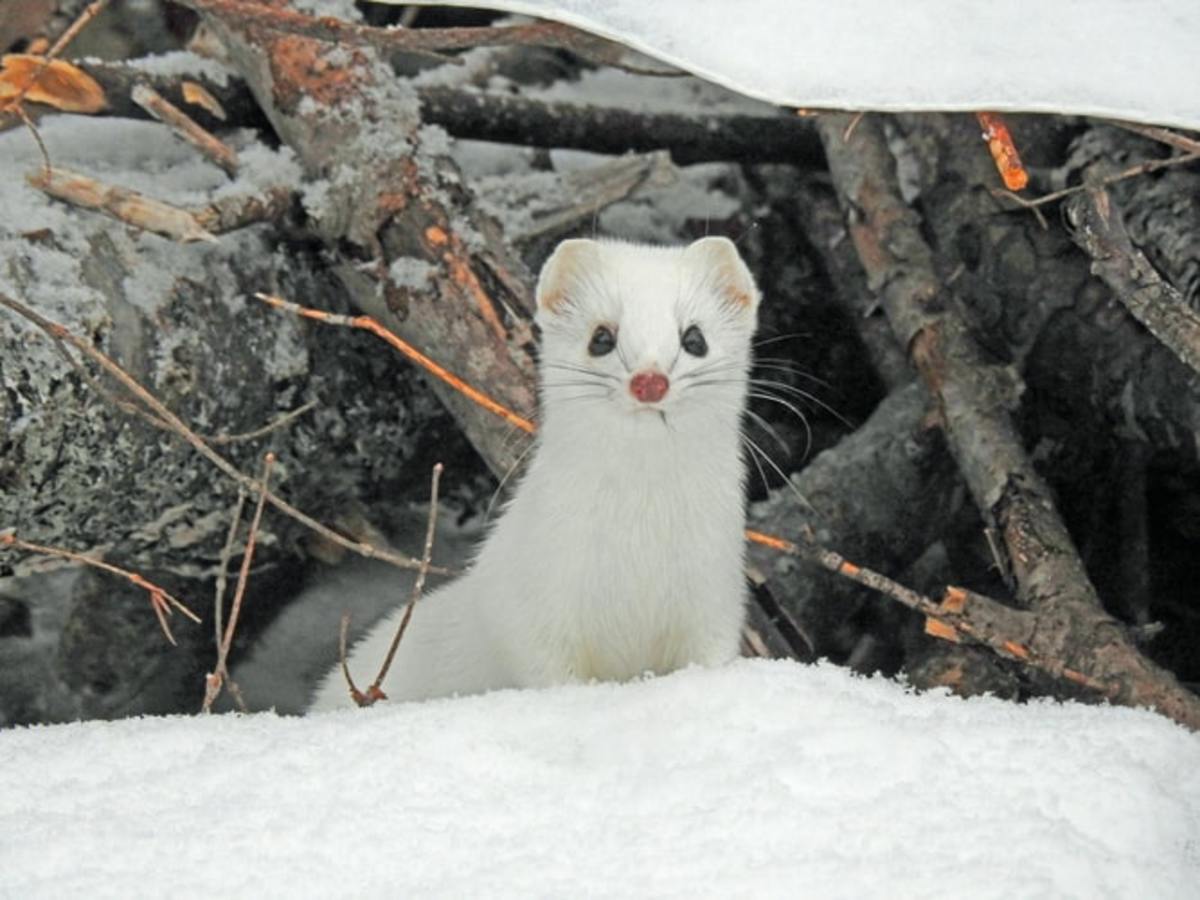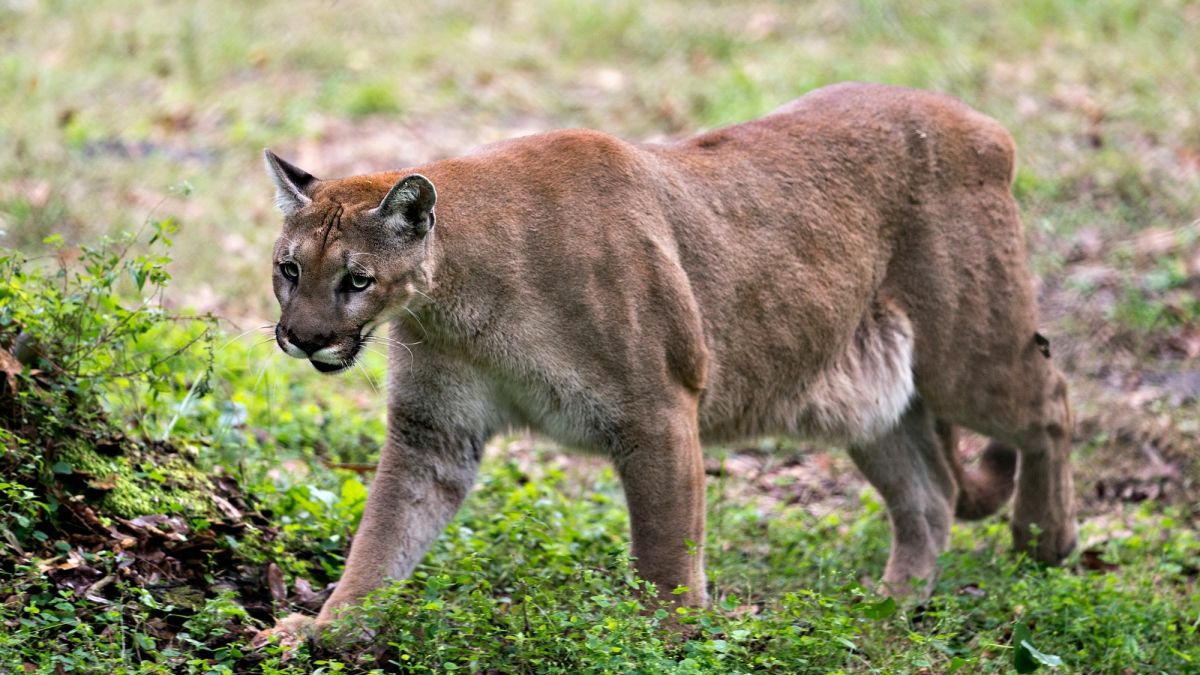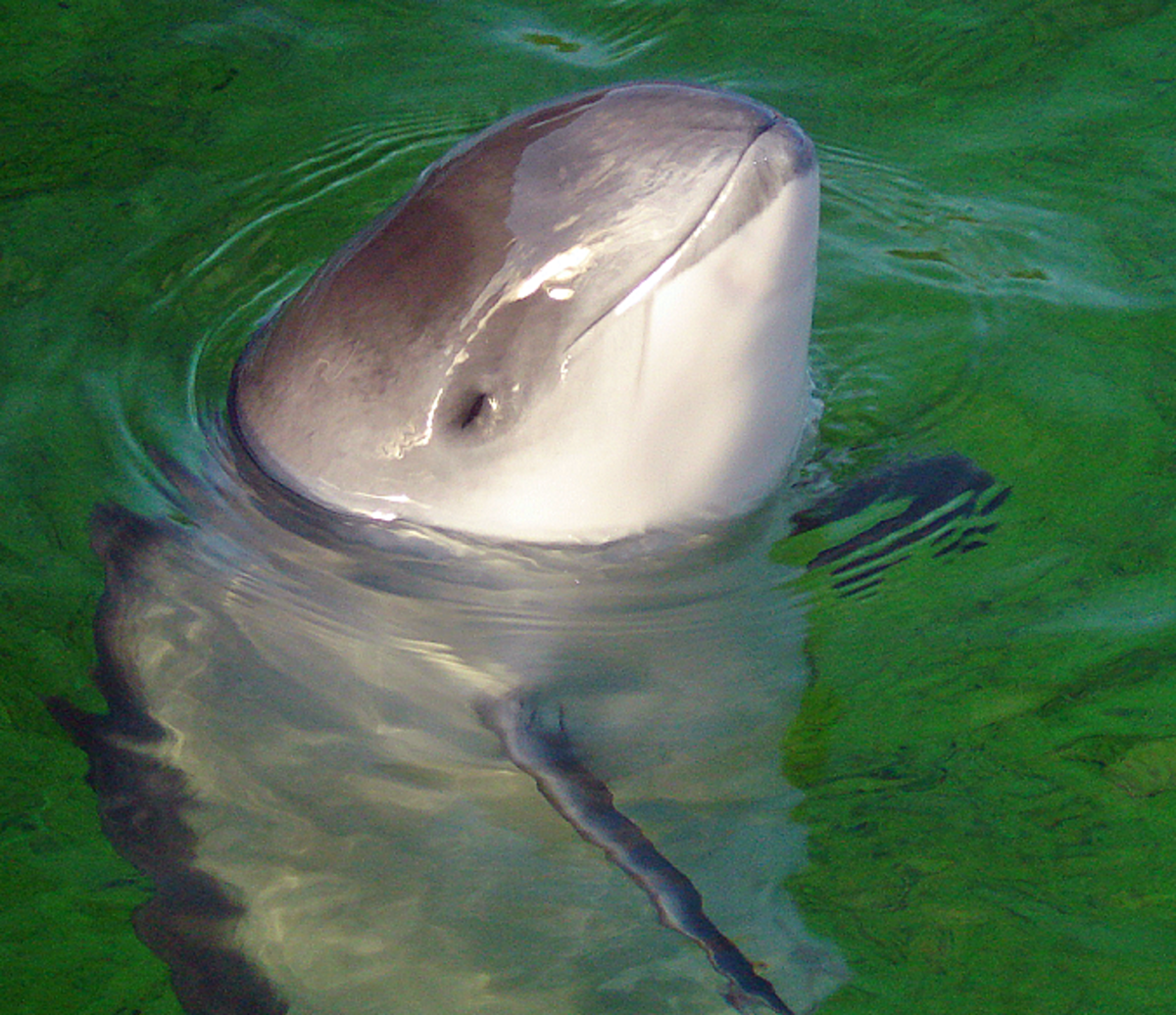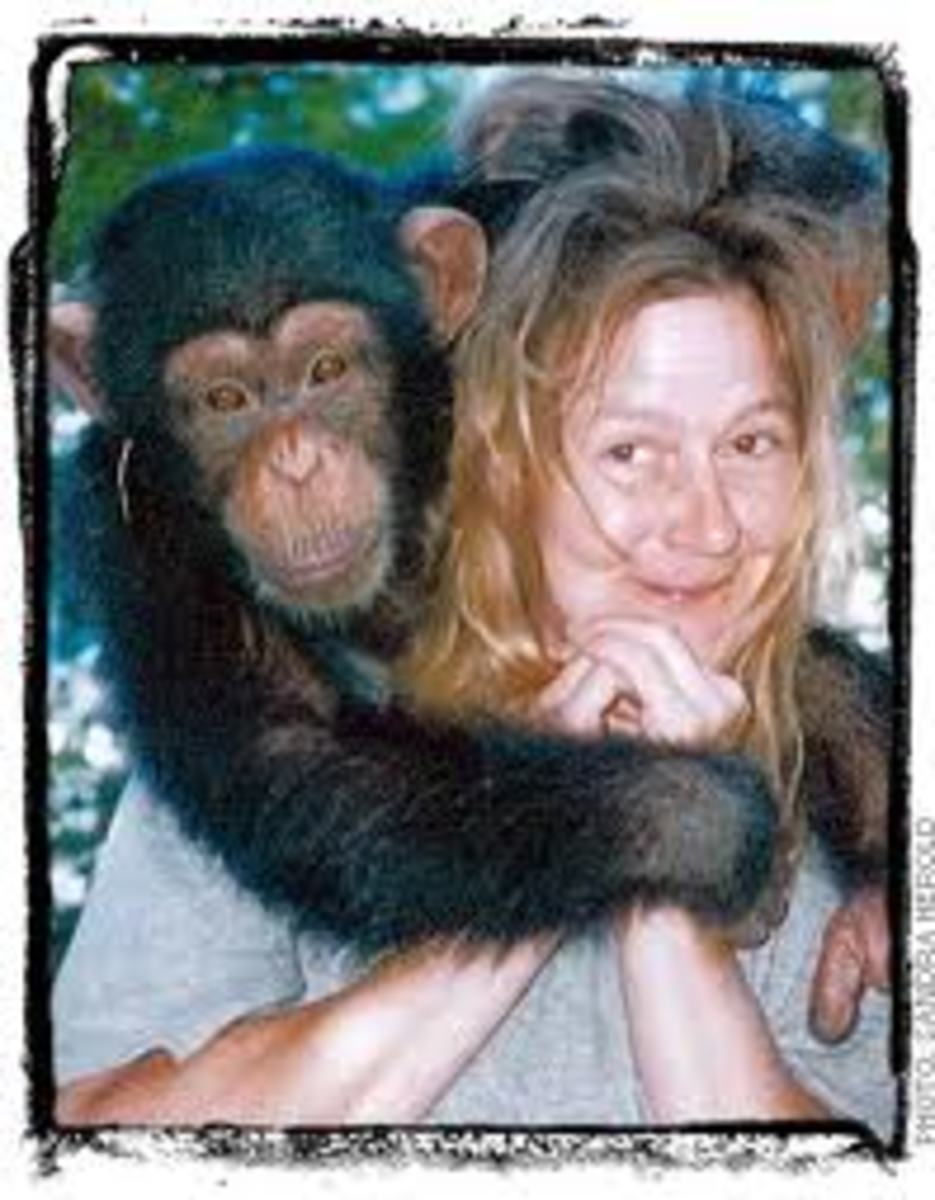Bonobo, the other Chimpanzee
Scientific Name: Pan paniscus
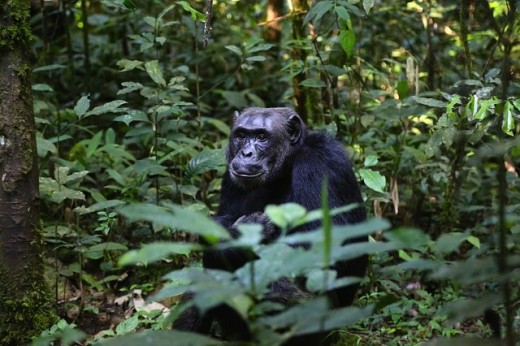
Description
The Bonobo Chimpanzee is the least known of the two species in the world. They separated from the Common Chimpanzee approximately 1 million years ago. They are very similar in appearance with long hair that is either brown or black. They also have a ridge in the forehead and long jaws with outward lips. They are very closely related to humans based on DNA profiles.
More Chimpanzee Facts
- Chimpanzee Facts and Information
Chimpanzee Facts and Information. Feeding, habitat, distribution, reproduction, anatomy and more. Facts about the Chimpanzees and Bonobs among others and the conservation efforts made to preserve bears - Infant Chimpanzee - Facts and Information - The Portal of Life
Facts and Information about Infant Chimpanzee. Infant Chimpanzee Description, Behavior, Feeding and Reproduction.
Evolution
So how did the Bonobo Chimpanzee come to develop such a body? Many believe it is the result of the slow process of evolution. This could be what separated them from other great apes millions of years ago. It can also be part of why they are so closely related to us. There could be other ancestors that have become extinct that are also very genetically close to humans.
The key is believed to be in the fossils out there of the Bonobo Chimpanzee. However, we simply haven’t been able to locate very many of them at all. Even though these animals are only living in Africa today, some of the remains show that they once did live in Kenya.
Anatomy
Looking at the parts of the body of the Bonobo Chimpanzee, one can tell that they have a very unique set up. First, they have legs that are quite a bit shorter than their arms. This is why they have no trouble at all when it comes to bending and walking on their knuckles. They can walk in an upright position but that uses more energy. They are also slower at such movements.
They have a very strong upper body in spite of only being about four foot tall. They are much lighter than other great apes so they can easily swing through the trees and get around without using lots of energy to climb down to the ground to move to other tree areas. This process is also one that helps to protect them from predators.
Bonobo Video
Gorilla Information
- Gorilla Facts and Information
Gorilla Facts and Information. Feeding, habitat, distribution, reproduction, anatomy and more. Facts about species like the Eastern Gorilla and Western Gorilla. Also the conservation efforts made to preserve Gorillas.
Behavior
There are two distinct sides to the behavior of the Bonobo Chimpanzee. They are known to be fun animals to observe. They love to play and have a good time with each other. They use various forms of communication with each other. We can often figure out what lots of the facial expressions and non verbal movements mean. Those that are verbal can be harder for us to decipher.
They are extremely social with each other so they spend lots of time hanging out in smaller groups. The troop can become very large but they will spend large segments of time with smaller groups within it. What there role is within the troop can change often and that will transform where they fit in with subgroups too. Most of the time they get along within the troop but they can become aggressive towards each other at times.
When they are aggressive in nature it is almost always towards other types of monkeys out there. In fact, they will go as far as to kill the offspring if they are able to do so. They will take it back to their troop as prove of what they did. It is like a ritual where they are rewarded within the troop for it. Then they will consume the kills they have made.
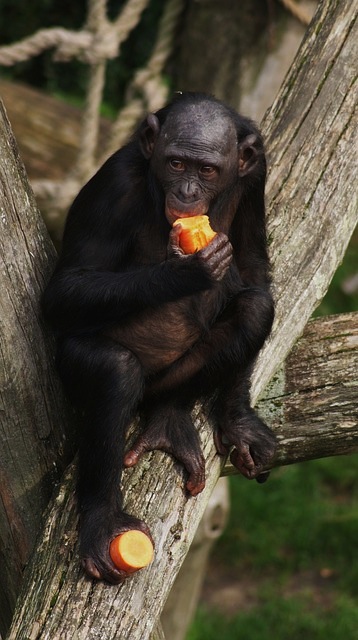
More Animal Facts
- Lemur Facts and Information
Lemur Facts and Information. Feeding, habitat, distribution, reproduction, anatomy and more. Facts about the Ring-Tailed Lemurs, Red Ruffed Lemurs, Gray Mouse Lemurs, Golden-Crowned Sifaka among others and the conservation efforts made to preserve le - Orangutan Facts, Bornean Orangutan, Sumatran Orangutan
Orangutan Facts and Information. Feeding, habitat, distribution, reproduction, anatomy and more. Facts about Species like the Sumatran Orangutan, Bornean Orangutan and many others.
Habitat and Distribution
You will only find the Bonobo Chimpanzee today living in the wild around the Democratic Republic of Congo. They are very spread out here and only about 10,000 of them remain. They live in areas where there is enough water, trees, and plenty of food for them. However, these areas continue to be heavily invaded by humans and that makes it hard for them to survive.
There are conservation efforts in place today to try to preserve these animals. Even so many worry that it is too little too late. The government of Africa has made it illegal to hunt them or to harm them but it continues all the time anyway. Many officials are paid to look the other way so that humans can continue to make money from this land.
Diet and Feeding habits
You will only find the Bonobo Chimpanzee today living in the wild around the Democratic Republic of Congo. They are very spread out here and only about 10,000 of them remain. They live in areas where there is enough water, trees, and plenty of food for them. However, these areas continue to be heavily invaded by humans and that makes it hard for them to survive.
There are conservation efforts in place today to try to preserve these animals. Even so many worry that it is too little too late. The government of Africa has made it illegal to hunt them or to harm them but it continues all the time anyway. Many officials are paid to look the other way so that humans can continue to make money from this land.
Bonobo Video
Reproduction
The Bonobo Chimpanzee is one of the few animals in the world that mates for reasons other than creating offspring. They seem to mate in order to show affection and as a part of their social structure. The males and the females often mate years before they are physically able to create offspring.
The successful mating can result in one or two young being born. They will emerge from the body of the mother about 200 days after the mating occurs. These are small animals that depend on the mother to offer them milk from her breasts. She will carry her young around in her arms for several months. Then they move to her back where they hold on and begin to also feed on some solid foods.
The young stay with their mother for about five years and that is why it is also hard to get the population to increase. The females don’t want to mate again for several years when they already have one young one to focus their attention on.
Predators
There are a couple of common predators in the location of the Bonobo Chimpanzee that have to be watched out for. Most assume that in the trees they are perfectly safe but that isn’t always true. These trees are prime locations for extremely large snakes to live. They can consume these animals for a meal that takes them several days to digest.
There is also the concern of the leopard as they can be found both in the trees and on land. They are fierce hunters that can take down animals several sizes larger than they are. The leopard won’t relent and they are very patient hunters. They calculate everything before they go after prey so they are almost always successful.
Humans have destroyed the habitat continuously over the past couple of decades. They have hunted the Bonobo Chimpanzee for food and to make money from selling them as illegal pets. They have also taken over their environment so they can farm, so they can engage in forestry, and so they can mine.
There seems to be no real concern among the people of this region to protect the Bonobo Chimpanzee either. It seems that in many of the villages these animals are deemed as a threat. The villagers feel it is best to take them out before they risk themselves being harmed.

